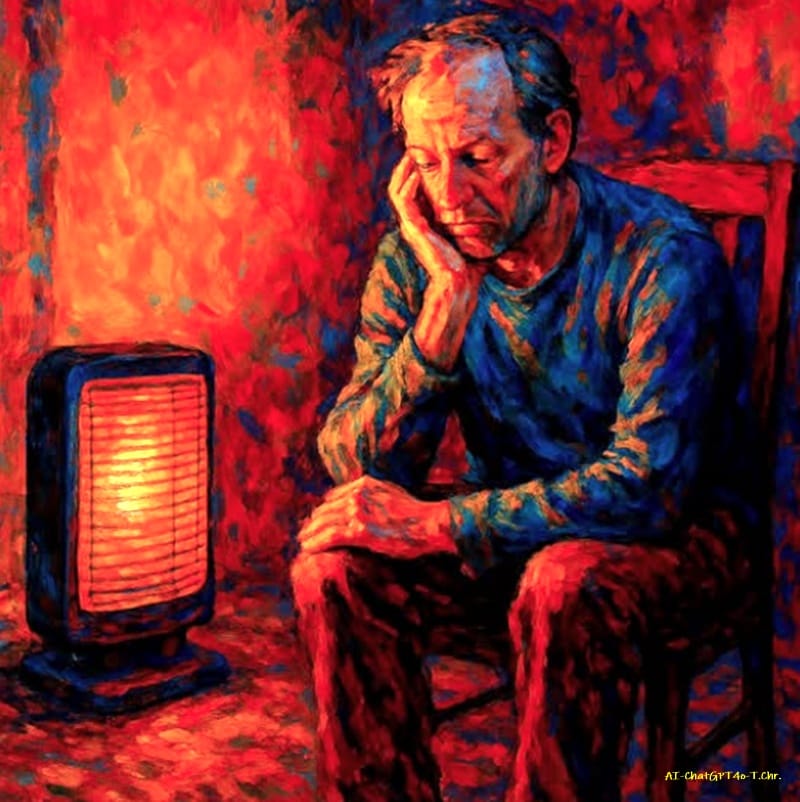THE STORY OF JONAS (TABOO)

By T.Chr.-Human Synthesis-24 August 2025
Jonas was a man of quiet strength. To anyone who saw him in the marketplace, laughing with the fruit seller or greeting neighbors with a nod, he seemed like someone who had weathered life with dignity. But few knew of the nights when sleep would not come, when memories knocked like unwanted visitors at the door of his mind, demanding to be let in.
He had lived through violence in his youth, the kind that leaves marks not only on the body but deep within the soul. For many years, Jonas wore what he called the mask of the functioning man. He worked, paid his bills, even raised a family. Outwardly, he was reliable. Inwardly, he carried an emptiness that made every victory taste dull.
What saved Jonas was not a sudden miracle but the slow dawning of a truth: he could not go on living for the approval of others. He had to learn to live with himself.
It began the day he admitted to a friend that he sometimes thought of ending his life. He expected rejection, maybe ridicule. Instead, his friend sat silently beside him and said, “Thank you for trusting me.” That moment cracked the wall Jonas had built for decades.
Learning to Live with Ourselves
Living with trauma is not about erasing the past. The past is written into the nervous system, the body, the very way we breathe. What changes is the relationship we have with it.
Jonas came to see that the pain he carried was not his fault, but it had become his responsibility. He had to decide whether it would harden him into bitterness or soften him into compassion — for himself first, and then for others.
He began to walk daily, even when his body resisted. He practiced speaking gently to himself, as he would to a frightened child. Some days he failed miserably; the old voices of shame and self-loathing were loud. But over time, another voice grew louder: the voice that said he was allowed to exist, to feel, to take up space.
He had lived many years carrying a silence heavier than any words could bear. To others, he looked composed—calm even. He kept his work, his routines, his polite smile, and the occasional laugh at a well-timed joke. But inside, the past lingered like a shadow that stretched over every room he entered. Trauma does that—it doesn’t shout, it whispers. It waits. It creeps into quiet moments and tells you that you are not safe, even when you are.
For a long time, he believed the only way to survive was to endure it alone. To live with himself, but never truly in himself. He wore masks, not out of dishonesty, but as protection. The world wasn’t gentle with men who confessed they were hurting. And so, when asked “How are you?” the reflexive “I’m fine” was his armor.
But healing began—not with him, but with those who dared to stay close. Caretakers, friends, partners—people who were willing to walk beside someone they could not fully understand. For caretakers, this was the first hard truth: you cannot fix what is broken in another’s soul. You cannot erase the trauma, rewrite the past, or silence the echoes that wake them in the night. What you can do is stand steady while they weather the storm.
Caretaking for trauma is not a heroic rescue. It is not about grand gestures. It is about learning the rhythm of another’s survival. Some days, silence is needed more than conversation. Other days, the greatest act of care is listening without judgment, without rushing toward solutions. It is about knowing when to step forward and when to step back. It is about respecting the survivor’s pace, not forcing them into yours.
Over time, he realized he wasn’t alone—not because his pain disappeared, but because someone else bore witness to it. That was the turning point. Trauma isolates; it convinces you that no one could ever understand. But the steady presence of a caretaker proves otherwise: “I may not understand everything you carry, but I will not let you carry it unseen.” Caretakers themselves face invisible burdens. They must balance compassion with boundaries, empathy with self-preservation. To care for someone in pain without being consumed by that pain is a skill often learned the hard way.
Many caretakers struggle with guilt—believing they should be able to do more, say more, solve more. But real care is not measured in solutions. It is measured in patience, consistency, and respect. One evening, years later, he sat with a friend who had become his anchor through many storms. He said, quietly but with a kind of strength he hadn’t known before:
“I used to think I had to defeat the past. Now I know I just have to live with it—and learn to live with myself. And I couldn’t have learned that alone.”
For caretakers, this was the message: you do not erase trauma, you help build the conditions where life can grow around it. You help the survivor discover that they are not only a victim of their story, but also the author of what comes next.
And for survivors, the message was this: healing is not a return to who you were before, but learning to take care of yourself!
